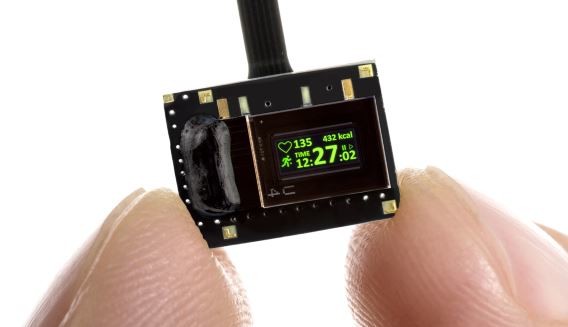Energy-efficient display for data glasses
November 08, 2016
on
on

Data glasses present data to the user’s eyes by means of a small display. Unfortunately, the display and associated drive circuitry consume a fair amount of power, so battery life is limited. Researchers at the Fraunhofer Institute for Organic Electronics, Electron Beam and Plasma Technology (FEP) in Germany have developed an energy-efficient OLED display for this sort of application, which cuts power consumption to a fraction of what current displays require. The display is being exhibited at the electronica trade fair in Munich on 8–11 November.
The engineers at the FEP have many years of experience in developing and producing OLED displays. In this case they mounted the OLEDs on a silicon chip which drives the individual pixels. The chip also has integrated camera capability, which is provided by a photodiode in each OLED. Camera functionality is necessary in order to determine the direction of the user’s gaze. However, this does not reduce power consumption.
Video imagery is usually updated at a rate of 50 or 60 frames per second, which costs a lot of power. The FEP researchers found a way to reduce the volume of the data stream by only updating the parts of the image that change. This yields considerable power savings – normal data glasses consume about 200 mW, but the FEP display needs only 2 to 3 mW.
The engineers at the FEP have many years of experience in developing and producing OLED displays. In this case they mounted the OLEDs on a silicon chip which drives the individual pixels. The chip also has integrated camera capability, which is provided by a photodiode in each OLED. Camera functionality is necessary in order to determine the direction of the user’s gaze. However, this does not reduce power consumption.
Video imagery is usually updated at a rate of 50 or 60 frames per second, which costs a lot of power. The FEP researchers found a way to reduce the volume of the data stream by only updating the parts of the image that change. This yields considerable power savings – normal data glasses consume about 200 mW, but the FEP display needs only 2 to 3 mW.
Read full article
Hide full article


Discussion (0 comments)